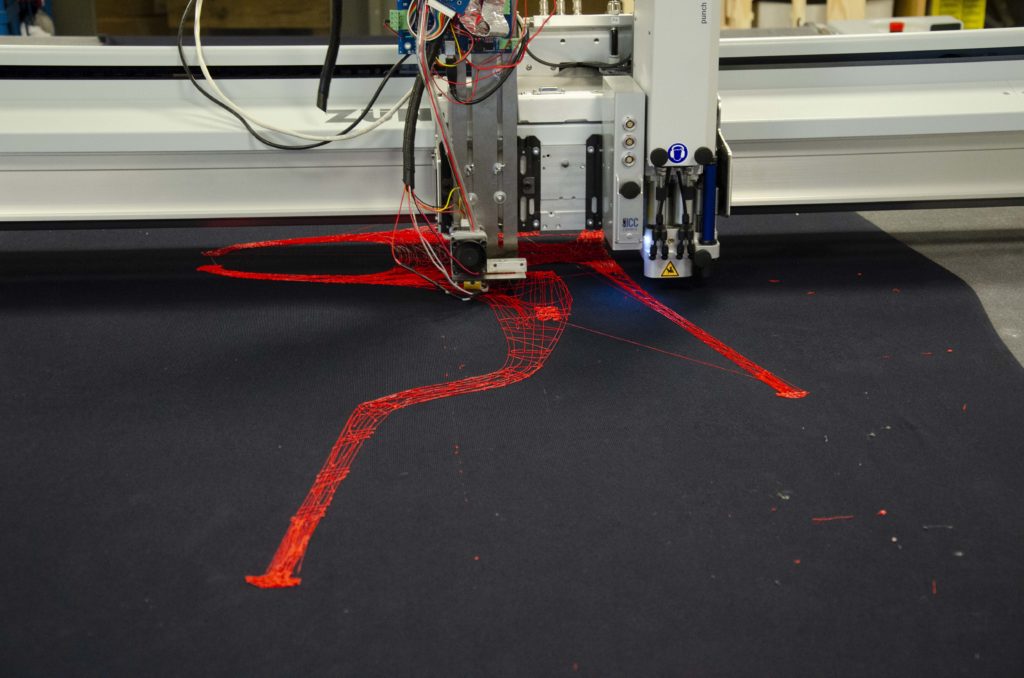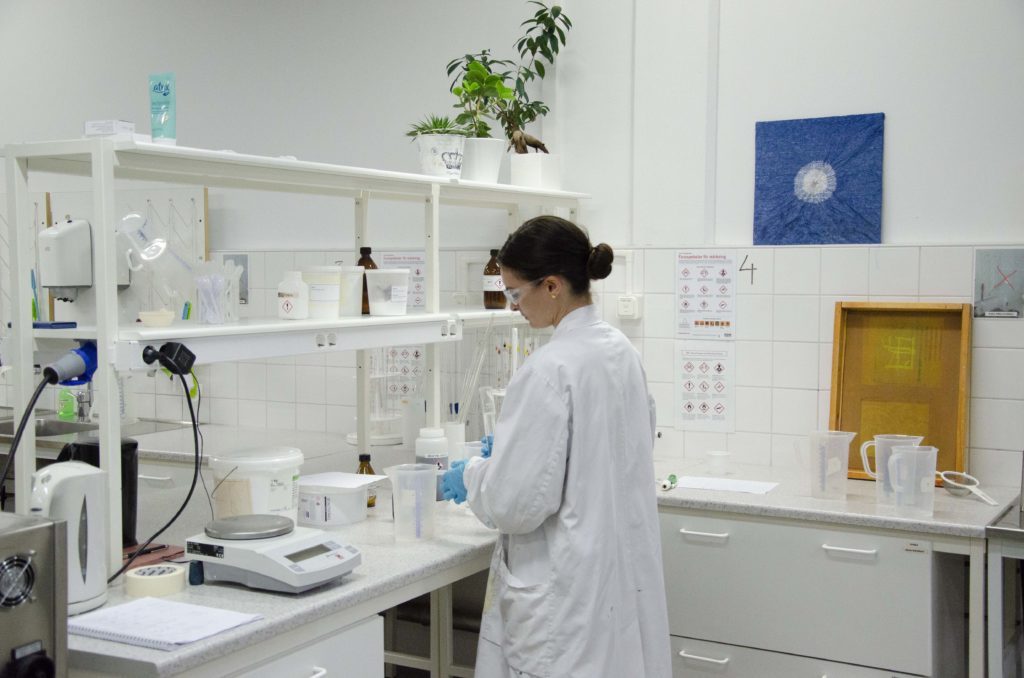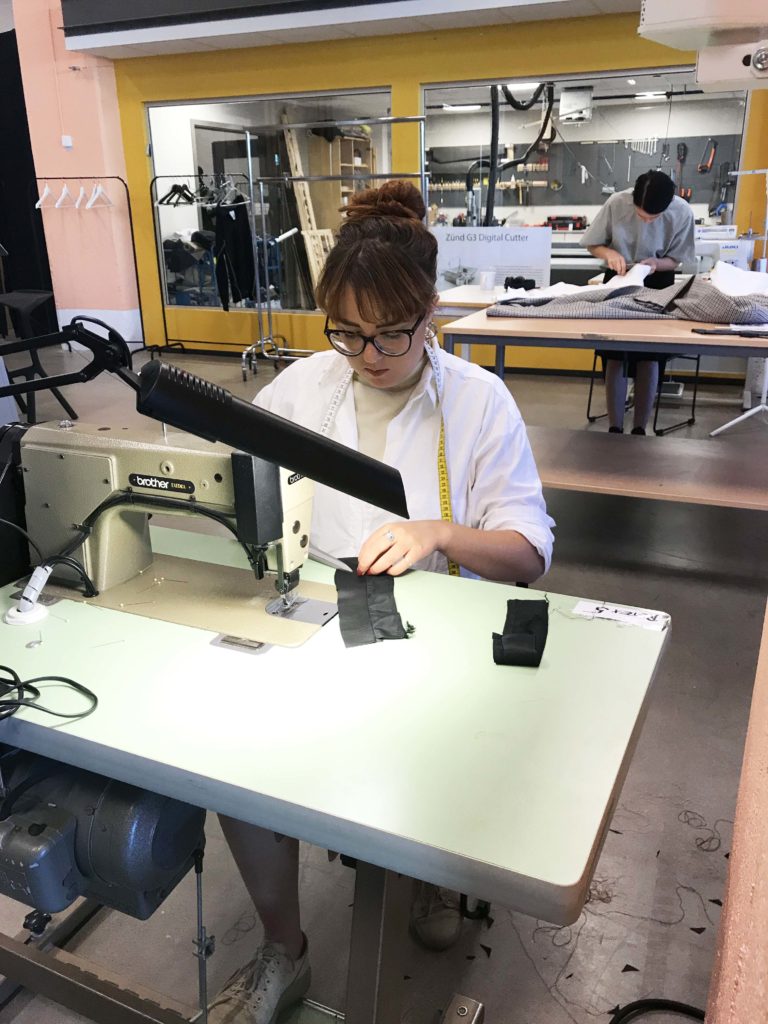On 26-30 August 2019, the Big Do activity was organized under Textile & Fashion 2030, a national platform commissioned by the Swedish government. A design hackathon with the goal of developing new products and solutions for a more sustainable textile and fashion industry. Designers from Gina Tricot and Craft Sportswear, among others, challenged their existing processes in order to contribute to more sustainable development.
Based on a number of defined design principles and the UN’s global sustainability goals, invited designers and visionaries in the textile and fashion industry were challenged to develop new ideas during Big Do week and flesh them out into finished results
The Swedish School of Textiles’s workshops and the creative environment of the Do-tank Center were at the disposal of the participants. A wide variety of resources in the form of machines and knowledge was available and everything from embroidery and knitting machines, printing and paint labs to a custom-built 3D printer were used to create exciting new solutions and products. During the week, ideas were bounced off of supervisors and technicians from the Swedish School of Textiles and Smart Textiles, and together, solutions were shaped along the way.
From surplus stock to trendy garments in the microfactory
Designers from Gina Tricot and Craft Sportswear used the microfactory that was temporarily set up in the Do-tank Center. A small-scale textile production line that included all the necessary steps, from sketch and cutting tables to sewing and finally photography of the finished product. With new design sketches, fashionable garments were created from surplus stock, sample collections, returns, etc. Some of the garments will be on sale as early as this autumn in the companies’ own sales channels and there are already plans for more collections using the same concept.
Read article about the collection Gina Tricot Upcycle here.
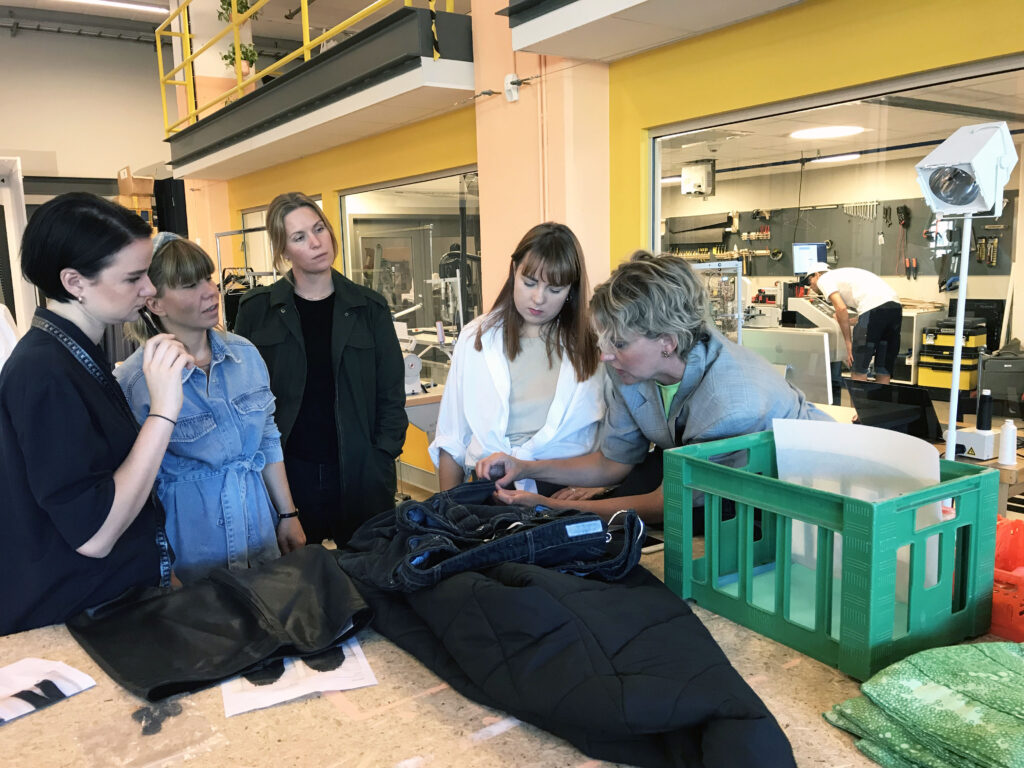
Right material from the beginning
Instead, the companies Houdini Sportswear and Guringo Design Studio worked to produce garments and textile materials where sustainability is at the heart of material and product development. In Houdini’s case, the Big Do focused on using Swedish wool, which is now largely thrown away, and through various knitting structures add even more function to the already unique properties of the wool. In this way, applications and thus business opportunities can increase for products that are one hundred percent wool.
Guringo Design Studio works with bio-based materials and 3D printed clothes that do not last very long. Organic functional garments that can be disposed of in household waste bins and are then able to become biogas. Guringo also wants to develop ideas on how we can remove the ownership of garments and rather see the garments as a temporary service, like the shift from buying CDs to streaming music. The idea is that the garment is manufactured when the customer needs it and then returns it to the ecosystem where it becomes an asset instead of a burden.
Can a white T-shirt remain white and fresh forever?
Naomi Bailey-Cooper from the London College of Fashion chose to start from the basic garments we have in our wardrobe, such as black jeans and white T-shirts, and tested different methods to prolong the life of these garments – a kind of renovation. Among other things, a particular enzyme appeared to have good effects on restoring the original color of dark garments. One thought is that when our black sweatshirt seemed washed out and dull, we can freshen up the color by buying a service at a company, instead of buying a new garment.
Three perspectives with the same goal
“Big Do has simplified the development of textile concepts based on the global goals. We have had good variety when it comes to the participants’ projects from three different perspectives. Two of the companies, Gina Tricot and Craft, worked with re-making. Houdini and Guringo have worked on doing new things well from the start and Naomi Bailey-Cooper from the London College of Fashion has looked at how to keep things usable longer. It’s great to see three approaches that all contribute to our ultimate goal of reducing the industry’s climate impact. This is also the philosophy we want to spread within Textile & Fashion 2030, that there is not one solution to the problem but that the solution is to work with several solutions in parallel – and that together we make a difference,” says Jonas Larsson, Senior Lecturer at the Swedish School of Textiles and Project Manager for Big Do .
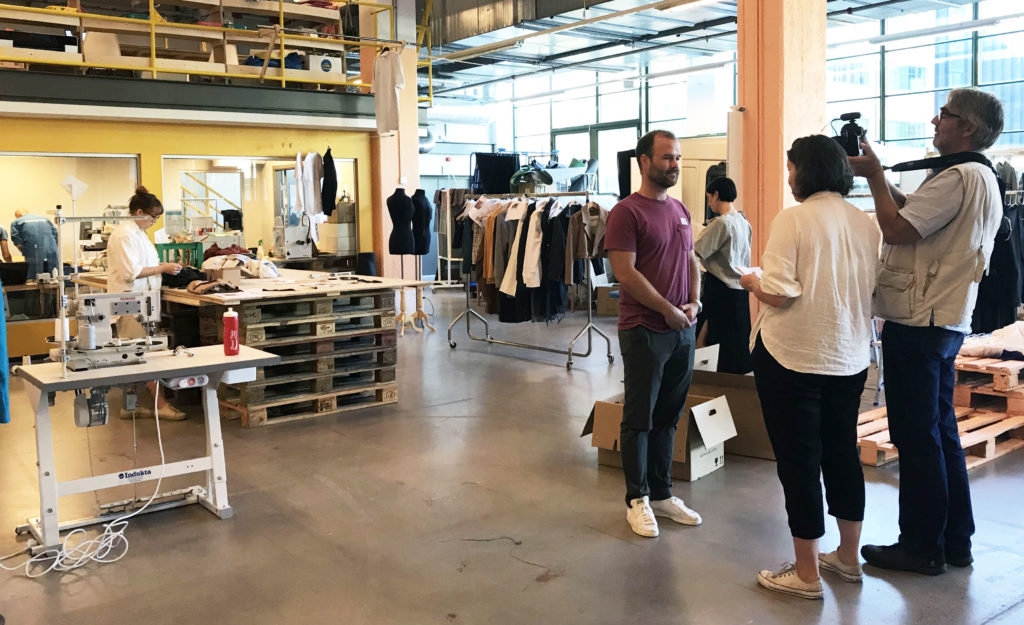
Find out more about the results
The results in the form of products, prototypes and concepts will be exhibited in an exhibition, Exposé, premiering at the event National Workshop on 23-24 October 2019 in Textile Fashion Center, with the organizer Science Park Borås. Exposé will then also be exhibited at other events and activities both nationally and internationally.
Movies from Big Do
Participating companies/organizations and designers
Gina Tricot, Jenny Lundberg and Frida Hallgren
Craft Sportswear, Lena Balasingam
Houdini Sportswear, Sanna Bodén, Sandra Söderin and Sara Normark
Guringo Design Studio, Erik Lindvall
London College of Fashion, Naomi Bailey-Cooper
XV Production, Felicia Lundberg and Lovisa Nolander (production in the microfactory).
Big Do is organized by the University of Borås/Swedish School of Textiles/Science Park Borås/Smart Textiles, within the framework of the Textile & Fashion 2030 government mission – the national platform for sustainable fashion and sustainable textiles.
Read more on the website for Textile & Fashion 2030
Feel free to follow the platform on LinkedIn
